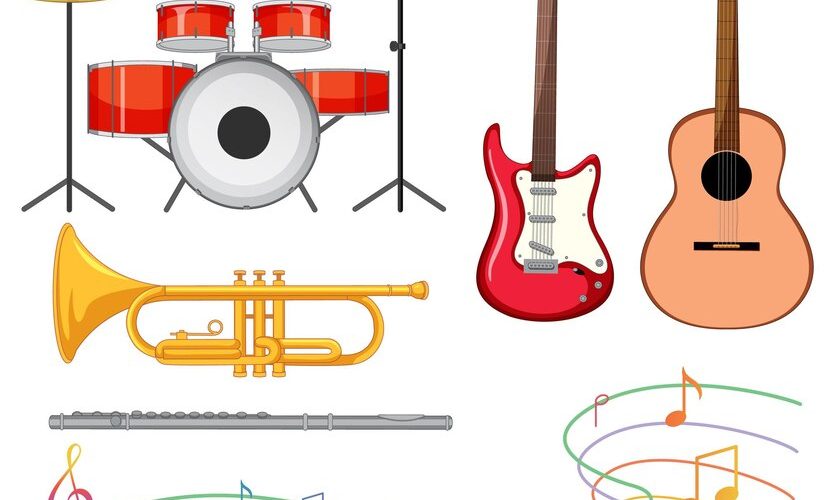Financing a Musical Instrument: Making Melody Affordable

For many music enthusiasts, owning a quality instrument is not just a desire but a necessity. Whether you’re an aspiring musician eyeing a grand piano or a seasoned guitarist looking for an upgrade, the cost of musical instruments can often pose a challenge. Fortunately, there are multiple financing avenues available like Compacom personal loans for musical instruments, for example. This guide takes you through the best strategies to acquire your dream instrument without breaking the bank.
Why Consider Financing for Musical Instruments?
Before delving into financing options, it’s vital to understand why many choose to finance:
- High-Quality Instruments: Quality instruments often come with a hefty price tag. Financing allows musicians to obtain a superior instrument that can last a lifetime rather than settling for less.
- Professional Requirements: For professional musicians, having a top-tier instrument can be crucial for their career. Financing ensures they don’t compromise on their sound quality.
- Learning and Growth: For beginners, starting with a good quality instrument can accelerate the learning process and boost motivation.
Financing Options for Your Musical Passion
- In-Store Financing: Many music stores offer financing plans for instruments. These can range from interest-free periods to installment plans. Always read the terms carefully to understand any interest rates or fees involved.
- Personal Loans: A popular option for many, personal loans from banks or credit unions can be used for any purpose, including buying an instrument. Interest rates can vary based on your creditworthiness and the loan duration.
- Credit Cards: Some choose to purchase instruments using credit cards, especially if they can benefit from rewards or cash back. However, high interest rates on lingering balances can make this option expensive in the long run.
- Rent-to-Own Programs: Some music stores offer rent-to-own programs where you can rent an instrument and eventually purchase it. This can be an excellent option for those unsure about committing to an instrument or for young students who might outgrow their instruments.
- Peer-to-Peer Lending: Platforms like LendingClub or Prosper allow individuals to borrow directly from peers rather than traditional financial institutions. They can offer flexible terms and rates, though they often require a good credit score.
- Grants and Scholarships: For exceptionally talented individuals or those facing financial hardships, there are grants and scholarships aimed at helping them acquire instruments. National and local music associations, schools, and private organizations often offer such programs.
Requirements to Secure a Personal Loan for a Musical Instrument
If you’re considering taking out a personal loan to finance a musical instrument, it’s essential to understand the typical requirements lenders might have:
- Credit Score: One of the most crucial factors, a good credit score (typically 650 or above) will not only increase your chances of approval but can also secure you a better interest rate. Some lenders might cater to borrowers with lower scores but might charge higher interest rates.
- Proof of Income: Lenders want to ensure that you have a steady income to meet the loan repayments. This can be in the form of recent pay stubs, tax returns, or employment verification letters.
- Debt-to-Income Ratio: This ratio measures your monthly debt obligations against your gross monthly income. A lower ratio (typically below 40%) indicates that you’re not overly burdened with debt and are more likely to manage additional loan repayments.
- Proof of Identity: This includes government-issued IDs like a driver’s license, passport, or Social Security card.
- Proof of Residency: Lenders may require a utility bill, lease agreement, or any official document showing your current address.
- Purpose of the Loan: While personal loans are often unsecured and can be used for various purposes, some lenders might inquire about the reason for the loan, especially if it’s a substantial amount.
- Loan Amount and Duration: Determine beforehand how much you need and over what period you plan to repay. This will help in seeking a loan that aligns with your financial capacity.
- Read the Fine Print: Always be clear about interest rates, any hidden fees, penalties for early repayments, and other terms before signing any agreement.
By ensuring you meet these requirements and conducting thorough research, you can secure a personal loan that fits your needs and financial situation, bringing you closer to your dream musical instrument.
Estimated Costs of Popular Musical Instruments
Purchasing a musical instrument can be a significant investment, especially if you’re aiming for quality and durability. Here’s an overview of the estimated costs for popular musical instruments:
Piano:
Beginner keyboards: $100 – $500
Upright pianos: $3,000 – $8,000
Grand pianos: $10,000 – $200,000 and above for renowned brands.
Guitar:
Beginner acoustic guitars: $100 – $300
Professional acoustic guitars: $1,000 – $5,000
Electric guitars: $200 – $2,000, with custom models and renowned brands fetching higher prices.
Violin:
Student violins: $100 – $800
Intermediate violins: $1,000 – $3,500
Professional violins: $5,000 to $20,000, with antique and specialty violins costing significantly more.
Saxophone:
Student saxophones: $400 – $1,200
Professional saxophones: $2,000 – $8,000
Drum Set:
Beginner sets: $300 – $700
Professional sets: $1,500 – $7,000
Flute:
Beginner flutes: $200 – $600
Professional flutes: $1,000 – $8,000
Factors to Keep in Mind When Financing
- Determine Your Budget: Before exploring financing options, assess your budget. Determine how much you can afford in monthly payments to avoid financial strain.
- Compare Interest Rates: Especially with credit cards and personal loans, the interest rates can significantly impact the total cost. Shop around and compare to find the best deal.
- Understand the Terms: Always read the fine print. Be clear on terms like the duration of the loan, penalties for missed payments, and any potential hidden fees.
- Maintenance and Insurance: Instruments require maintenance, and sometimes insurance, especially for professional-grade pieces. Account for these costs in your budget.
Striking the Right Note with Musical Instrument Financing
Owning the instrument of your dreams is achievable with the right financing strategy. By weighing your options and understanding the commitments, you can harmonize your musical aspirations with your financial reality. Remember, it’s not just about owning an instrument, but about the melodies, learning, and experiences that come with it.



